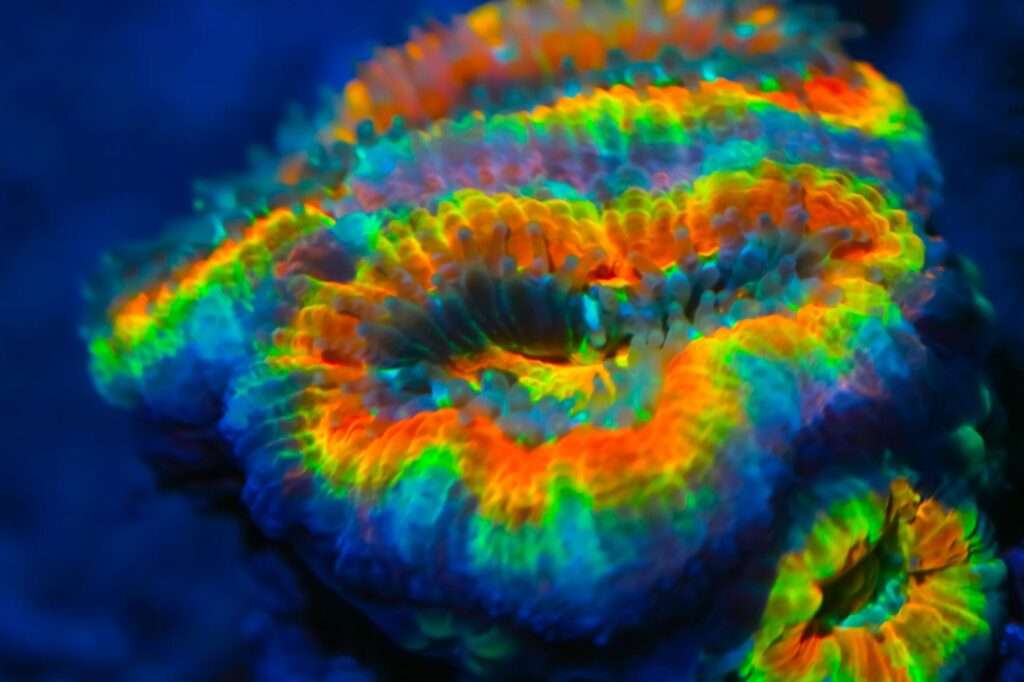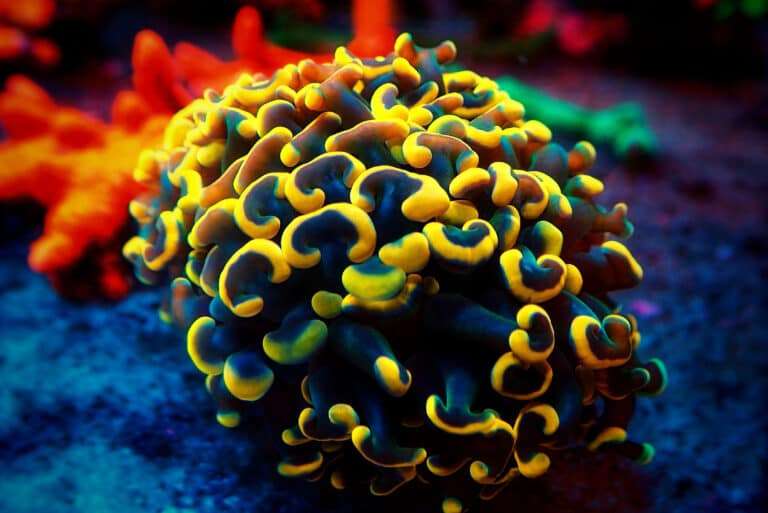
They develop in the wild in a meandroid pattern, where the polyps create hills and valleys. Though it was originally very scarce in the aquarium trade, P. lichtensteini is now widely accessible.
The “grape” or “bladder” corals of the Plerogyra genus are remarkably similar to the pearl bubble coral. The Pearl Bubble Coral, features water-filled vesicles (bubbles) that will really inflate or deflate depending on the light available, just as the Bubble Coral (Plerogyra sinuosa) and the Pearl Coral (Plerogyra flexuosa).
Habitat
The Physogyra genus can be found in the Red Sea, along Africa’s east coast, halfway down the continent, and then eastward along Madagascar and the Mauritius Islands. The Great Barrier Reef, the Coral Sea, and the Ningaloo Reef are all along Australia’s northern coast as they move on in an easterly direction. From there, they travel east and can be found all the way to Samoa in New Caledonia. They reside in caves, crevices, underhangs, and lower reef slopes. They favour protective environments like overhangs and crevices in shady or deeper reef regions. They can be found in shallow, brighter waters or low-light locations with virtually complete shade, but all of these habitats have murky water.
Morphology
The polyps in the Physogyra genus grow in a meandroid pattern, creating valleys and hills. Care must be taken to avoid “popping” the bubbles on this skeleton since there are fragments of prickly, brittle, thin “bone” called septa in-between the bubbles. Their septa are broad, smooth, and widely separated, and they develop horizontally. Tiny bubble clusters that resemble grapes during the day and retract when touched cover the surface of the Physogyra species. These ovoid, water-filled vesicles (bubbles) are really modified tentacles that encircle and shield the tiny polyps beneath them. The bubbles will enlarge or contract as needed during the day to absorb more or less light, but they will collapse at night.
In Captivity

- Feeding
The planktivores known as Physogyra corals have evolved a variety of feeding techniques. Many of its nutrients are obtained through a symbiotic interaction with a sea algae called zooxanthellae. They can also take in dissolved organic substances and planktonic creatures as well as food particles from the water column. Because different animal parts have varied nutritional characteristics, feeding your Physogyra in this manner will provide positive effects. Since these corals are constantly hungry, feeding them as needed with a variety of meals is beneficial. Additionally, it might prevent them from extending their tentacles too far.
- Social Interactions and Compatibility
The sweeper tentacles of the Physogyra genus have a strong sting that they may punch at both people and other corals. Even though they are hostile, it has been noticed that they die when there is a large population of leather corals (Sinularia), since the leathers do generate a toxin that is deadly to Physogyra. Hermit crabs also frequently irritate them to the point of tension and eventual death.
Table





